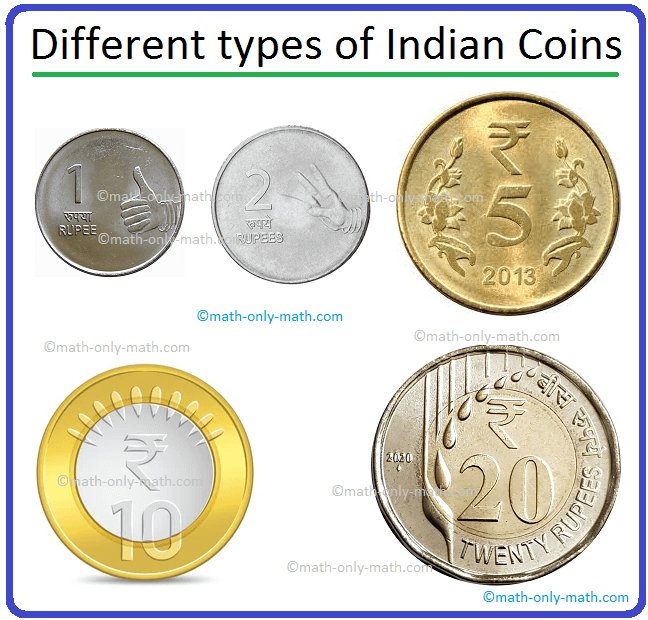Subscribe to our ▶️ YouTube channel 🔴 for the latest videos, updates, and tips.
Rupees and Paise
In our day-to-day life, we need many things. We buy these things from the market. In exchange of buying things, we pay money to the shopkeepers.
The money we use comes in two forms - coins and notes.
Coins are made of metal. Money made of paper is called a currency note.
In India money is counted in terms of rupees and paise.
Coins are available in the following denominations:
Notes are available in the following denominations:
Note: The notes and coins we use are called currency.
Money consists of rupees and paise; we require money to purchase things. 100 paise make one rupee. List of paise and rupees in the shape of coins and notes:
|
Paise Coins 5 paise 10 paise 20 paise 25 paise 50 paise |
Rupee Coins 1 rupee 2 rupees 5 rupees |
Rupee Notes 1 rupee 2 rupees 5 rupees 10 rupees 20 rupees 50 rupees 100 rupees 500 rupees 1000 rupees |
Coins of 5 paise, 10 paise, 20 paise, 25 paisa and 50 paise have disappeared from our markets. Now, notes of 1 rupee, 2 rupees and 5 rupees re also fast disappearing.
1 rupee = 100 paise
Symbol of rupees ₹
In short form, we denote rupee by Re or ₹,
Rupees by Rs. or ₹ and paise by P.
Thus, we can write, 1 rupee as Re 1 or ₹ 1,
5 rupees as Rs. 5 or ₹ 5 and 50 paise as 50 P.
Keep in Mind: 1 rupee, 2 rupees, 5 rupees, 10 rupees and 20 rupees are available in both coins and notes.
Making amounts with coins:
Now with the coins we find the amount of money.
If there is a 50-paise coin, a 25-paise coin, a 20-paise coin and a 10-paise coin, then what is the total amount?
50 paise + 25 paise + 20 paise + 10 paise = 105 paise = 1 rupee 5 paise
We know two, fifty-paise coins have the value of one rupee.
i.e., 2 × 50 paise = 100 paise = 1 rupee
4 × 25 paise = 100 paise = 1 rupee
5 × 20 paise = 100 paise = 1 rupee
10 × 10 paise = 100 paise = 1 rupee
20 × 5 paise = 100 paise = 1 rupee
25 × 4 paise = 100 paise = 1 rupee
50 × 2 paise = 100 paise = 1 rupee
Knowing the value of different coins, we calculate the value of the total amount.
Worksheet on Money (Rupees and Paise):
1. How many coins will make the value equal to the coins given on the left?
From Rupees and Paise to HOME PAGE
Didn't find what you were looking for? Or want to know more information about Math Only Math. Use this Google Search to find what you need.






New! Comments
Have your say about what you just read! Leave me a comment in the box below. Ask a Question or Answer a Question.